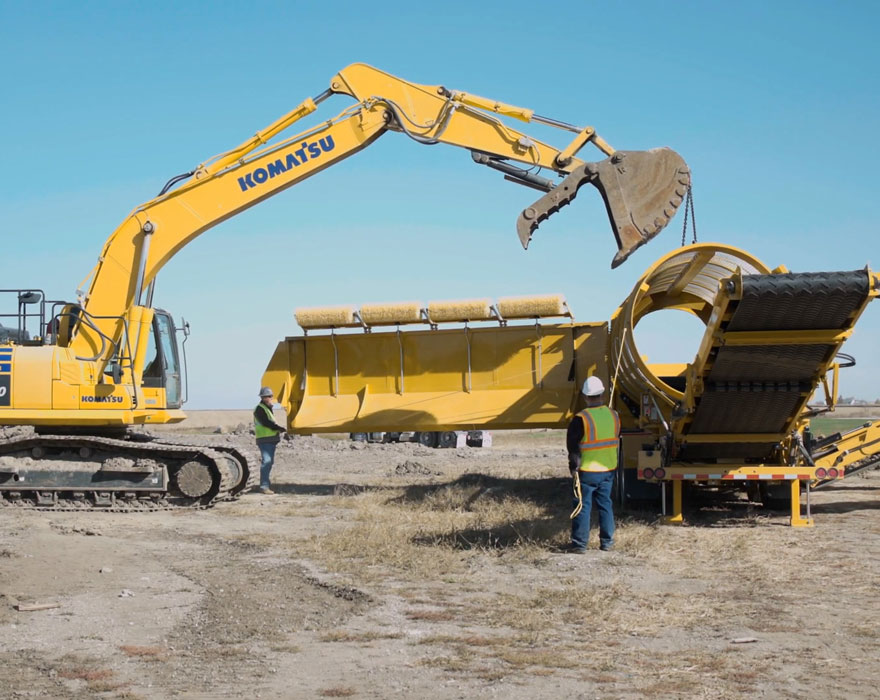Trommel Screen Innovations: Charting the Future of Material Separation

In the realm of material sorting and waste management, trommel screens have carved out a niche as indispensable tools. Known for their robustness and versatility, these screens have undergone significant transformations to cater to the evolving demands of industries aiming for sustainability and operational efficiency. This article delves into the latest innovations and future directions in trommel screen design, offering insights for those considering a trommel screen for sale, and highlighting the breakthroughs shaping the future of material separation.
Trommel Screen Essentials: A Primer
Understanding Trommel Screen Mechanics
At its core, a trommel screen is a rotating cylindrical drum outfitted with perforations to sort materials by size. This simple yet effective mechanism facilitates the separation of materials, with finer particles passing through the drum’s openings while larger items are conveyed to the end of the trommel for further processing or disposal.
The Versatility of Trommel Screens
Trommel screens have found applications across a broad spectrum of industries, including:
- Solid waste management and recycling
- Mineral and aggregate processing
- Agricultural operations for crop sorting
- Construction and demolition debris sorting
Revolutionary Designs in Trommel Screening
The quest for improved trommel screens has led to groundbreaking designs focused on efficiency, durability, and environmental sustainability.
Optimizing Material Handling
Addressing the challenge of material flow within the drum has led to innovations such as:
- Revolutionary Drum Configurations: Designs that promote smoother material flow, reducing blockages and enhancing separation efficiency.
- Adaptive Screening Technologies: The adoption of modular screens that can be easily adjusted for different materials, improving sorting precision.
Enhancements in Longevity and Maintenance
Advances aimed at extending the life of trommel screens and simplifying maintenance include:
- Use of Advanced Materials: Incorporation of materials with high wear resistance in critical areas to extend the lifespan of trommel screens.
- Maintenance-friendly Designs: Features that allow easy access to the trommel drum and other components, facilitating quicker maintenance tasks.
Eco-friendly Innovations
The drive towards minimizing the environmental footprint of trommel screens has resulted in:
- Energy-saving Measures: Implementations aimed at reducing the energy consumption of trommel screens, contributing to more sustainable operations.
- Sound Attenuation Techniques: Innovations to lower noise output, lessening the environmental impact on surrounding areas.
The Future of Trommel Screen Technology
Looking ahead, several promising trends are poised to redefine the capabilities of trommel screens.
The Rise of Smart Trommel Screens
- Intelligent Sorting Solutions: The integration of artificial intelligence and machine learning for enhanced sorting accuracy, capable of adapting to varying material characteristics.
- Remote Operations: Technologies enabling operators to monitor and adjust trommel screen settings from afar, optimizing performance and reducing downtimes.
Advances in Material Recovery
Future trommel screen designs are expected to further improve material recovery rates, particularly in recycling contexts.
- Ultra-fine Screening: The development of screens capable of finer separations, enabling the recovery of smaller valuable materials.
- Integrated Multi-stage Screening: The incorporation of multiple screening phases within a single unit for enhanced sorting accuracy.
Sustainable Screening Solutions
Sustainability will remain a pivotal aspect of trommel screen innovation, with future designs focusing on:
- Eco-friendly Construction Materials: The use of recycled or sustainable materials in the construction of trommel screens.
- Water Conservation: Advances aimed at reducing the reliance on water in the screening process, critical for operations in arid regions.
Key Considerations for Purchasing a Trommel Screen
When in the market for a trommel screen, it’s vital to keep abreast of the innovations and anticipate future trends. Key considerations include:
- Application Requirements: Ensuring the trommel screen matches the specific sorting and separation needs of your operation.
- Capacity and Size: Assessing the throughput capacity and size of the trommel screen to ensure it aligns with operational demands.
- Durability and Maintenance: Opting for models designed for longevity and ease of maintenance to minimize operational costs.
- Environmental Impact: Choosing trommel screens that emphasize energy efficiency and reduced environmental footprint.
Conclusion: The Evolving Landscape of Trommel Screening
The trajectory of trommel screen technology is marked by innovations aimed at enhancing operational efficiency, sustainability, and material recovery. For entities contemplating a trommel screen for sale, the landscape is ripe with opportunities to leverage these advancements for improved sorting and waste management practices. As technology marches forward, the integration of these innovations into material separation processes will be crucial for achieving operational excellence and environmental stewardship in the years to come.
